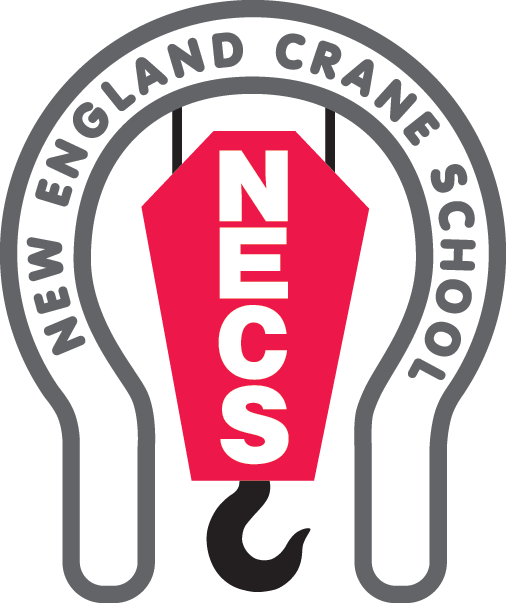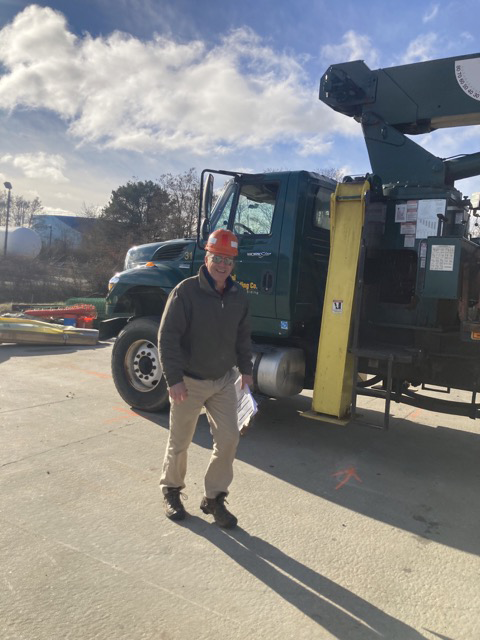Bob is what some might call a renaissance man. Since joining NECS as practical examiner in the spring of 2022, we’ve come to know his varied background through his love of storytelling and conversation. While he may be a man of varied interests, spending much of his free time restoring radios, building sculptural tube amplifiers and frames for his artist’s wife’s glass art, he attributes much of his professional skillset to working on a marina for several decades.
“When you’re a marina guy, you have to learn how to do everything…from plumbing to IT to electrical and even salvage work” he says, a place where his keen sensibilities and endless curiosity were put to good use.
Starting his career on a boatyard in the early1980’s, Bob had the experience of seeing his first crawler crane, an old 1945 Marion with a 6 cylinder diesel engine, unload a brand new boat. It was at that moment he thought to himself, “I want to try that!”
He jokingly remembers all the levers one had to pull to get those old cranes working, not like the hydraulic cranes of today, which have evolved in much the same way Bob has through his years of wearing many hats.
During his first years in marine construction, Bob ran cranes, did clamshell work, digging and drag line work until he was transferred to another marina on the Hudson river where he landed a management position. But Bob was never the type to like sitting behind a desk and inevitably would be out in the yard, utilizing his varied skillset wherever needed.
“I’ve picked up a lot of boats and I’ve never sunk one” Bob replied when asked about the salvage work he did, lifting sunken boats from out of the water, a tricky endeavor when the spud’s not long enough to keep the barge in one place. As any crane operator can tell you, stability of the crane is paramount when lifting. Bob learned to hone his awareness, to really look at a situation and feel it out before making a move. He advises any operator to do the same, “walk around the job site, trust your instincts…when you are in the seat, you are the boss.”
Whether on water or land, running a crane safely is Bob’s priority, and his keen awareness made him an excellent candidate for joining the NECS team as practical examiner. But brass tacks is not the only thing that makes Bob the man for the job. He’s invested in the people he works with and their experience throughout the exam. “Get everyone relaxed,” he says “ and that attitude will help people feel at ease” and ultimately, succeed.
Going slowly and paying attention during practicals is key for any operator and Bob will often lighten the load with a sense of humor and camaraderie that does not go unnoticed by the candidates themselves.
And while Bob is on the jobsite, especially when by the water, he’s taking it all in. He loves to tell the team about great work and interesting candidates he’s met on the job, like this one that brought him back to his marina days…
“It’s always nostalgic when I give exams to the folks in the marine construction business. It usually means a trip to the waterfront. Places that bring back memories. Most of these are off the beaten path, down a hidden driveway, behind an old factory or far up a creek where you would never suspect a barge and crane could go. Today took me to a piece of waterfront wedged between two ship yards. One side had two ferries on the hard, and the other had stacks of wooden piles and pile driving equipment stored. I felt totally at home, especially after meeting my candidates. Seasoned watermen.
The first test was for a lattice crawler crane that was actually on a barge. The barge was tied to the bulkhead. I laid out the test course from the crane over the bulkhead to the empty gravel lot, stepping over newly loaded piles. We had a short window to complete the testing because the operator and barge were leaving that afternoon, heading to a new job.
I was impressed as the ball swung through the slalom course, never touching a cone, as the crane, operator and barge gently swayed back and forth in the water. A perfect score. He made it look so easy, but I knew this was his happy place. A real pleasure to watch a real pro!
Next up was the telescopic crawler crane that was sitting on land next to the course we just finished. While the big Linkbelt warmed up and I had repositioned the cones and targets I got a chance to chat with my candidate. He told me he had been working in the marine business his whole career. We exchanged old barge and crane stories and had a few laughs regaling those tales before he took the seat on the waiting crane.
I hope no one noticed my surprise when he knocked a cone over on the slalom course. My guess is, he only has sea legs! It still amazes me how on a barge and crane moving around in the water he could weave through the slalom course never touching a cone but on a crane standing still on land he knocks one over. I guess you do your best work where you feel at home and his home is on the water.”


